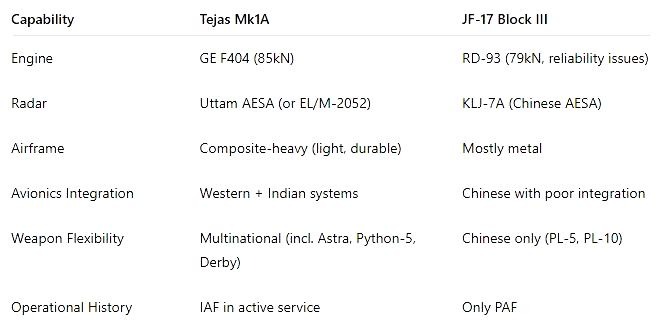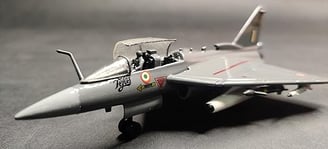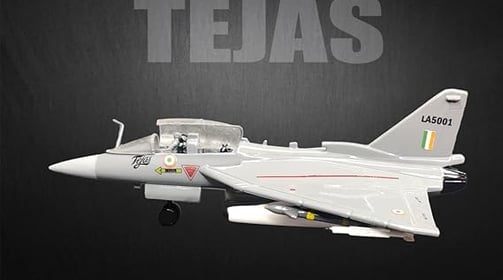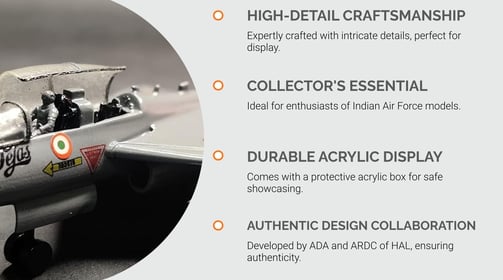

India’s indigenous Light Combat Aircraft (LCA) Tejas has firmly established itself not just as a symbol of self-reliance and technological prowess, but also as a formidable platform that surpasses rival aircraft like China’s JF-17 Thunder and even the more expensive J-10C. As the Indian Air Force (IAF) inducts more Tejas fighters and several nations show interest in procuring it, a compelling case emerges for Tejas as the best light combat aircraft in its class—far ahead of its Chinese counterparts.
🔧 Indigenous Engineering Meets Cutting-Edge Combat Capability
The Tejas is a 4.5-generation, single-engine, supersonic multirole fighter developed by Hindustan Aeronautics Limited (HAL) under the aegis of the Aeronautical Development Agency (ADA). Designed with an emphasis on agility, survivability, and modularity, the Tejas embodies India’s technological aspirations.
Key features include:
Fly-by-wire controls
Carbon fiber composite airframe (over 90% of the surface) for weight reduction and stealth
Glass cockpit with Israeli Elbit HUD and advanced digital avionics
Integrated AESA radar (Uttam or EL/M-2052)
Indigenous electronic warfare suite and data link systems
Compatibility with a wide range of weapons from Indian, Israeli, Russian, and Western origins
This combat-ready design stands in stark contrast to the Chinese JF-17, which relies on outdated Russian RD-93 engines and suffers from substandard quality control, and the J-10C, which, while technically advanced, is a heavier and more expensive platform not optimized for light combat roles.
🔥 Tejas vs. JF-17 Thunder: No Contest
The Pakistan-China co-developed JF-17 Thunder may seem similar in profile, but in reality, it is outclassed by Tejas in almost every key performance metric:
Tejas scores superior on thrust-to-weight ratio, turn rate, radar cross-section, and range. While JF-17s have been grounded frequently due to engine or avionics issues, Tejas has proved itself operationally reliable.
Most notably, Tejas has been designed with growth potential, something JF-17 lacks. The forthcoming Mk2 variant will boast the GE-F414 engine (98kN), increased payload, canards for agility, and full stealth measures.
🚀 Tejas vs. J-10C: Lightness vs. Heavy Burden
The J-10C, marketed as China’s frontline 4.5-generation fighter, is technically more capable than the JF-17 but still not optimized for the kind of operations a light multirole fighter like Tejas is meant for.
While the J-10C uses a more modern AESA radar and can carry long-range PL-15 missiles, it is heavy, maintenance-intensive, and entirely dependent on China’s single-supplier supply chain, which many nations view with skepticism. Moreover, the J-10C’s WS-10 engine suffers from reliability problems—a critical disadvantage in real-world operations.
Tejas, on the other hand, offers:
Lower operational cost per flight hour
Quick turnaround time and low maintenance footprint
NATO-compliant interoperability for export
Global support ecosystem (HAL + DRDO + international partners)
🛡️ Operational Integration with the Indian Air Force
The IAF has already inducted two squadrons of Tejas Mk1 and is actively building up a fleet of 83 Mk1A variants, with the first deliveries beginning in 2024. These aircraft are fully network-centric, enabling integration with AWACS, satellites, and ground control centers—key in modern air warfare.
Tejas has already participated in multiple joint exercises including:
Ex-Eastern Bridge (Oman)
IAF-Vayu Shakti
Aero India 2023, 2025 flight demos — where it showcased extreme maneuverability
The aircraft is being stationed at forward bases, ready for deployment against threats from both the western and eastern fronts, a clear signal of its strategic readiness.
🌍 Global Interest: Export-Ready and Geopolitically Advantageous
HAL has launched the Tejas in the export market, and countries like Argentina, Egypt, the Philippines, and Malaysia have all evaluated it positively. Unlike Chinese aircraft, Tejas is not burdened by military alliances, and HAL can tailor the aircraft’s weapons and subsystems to the buyer’s preferences.
Advantages for potential buyers include:
No end-user restrictions from U.S. or Russia
Indian diplomatic neutrality in most regions
Unmatched value for money: Top-tier features at lower lifecycle cost
No backdoor surveillance concerns unlike Chinese jets
🧠 Indigenous Innovation: Tejas Mk2 and AMCA on the Horizon
The Tejas program is the springboard for India’s future air combat doctrine. The Tejas Mk2 will be a Medium Weight Fighter with increased range, payload (6.5 tons), and fifth-generation cockpit systems. It will bridge the gap until India’s fifth-gen stealth AMCA enters service in the 2030s.
🏁 Conclusion: Tejas Is Not Just Good — It’s the Best in Its Class
The Tejas is not just a fighter jet; it is a testament to India’s resolve to master complex aerospace technologies and reduce dependency on foreign arms. While Chinese jets like the JF-17 and J-10C continue to face export skepticism, performance doubts, and quality control issues, the Tejas offers nations a modern, reliable, and cost-effective air superiority solution.
With advanced avionics, battle-ready systems, and proven flight characteristics, Tejas is India’s aerial answer to strategic autonomy—and the world is watching.






